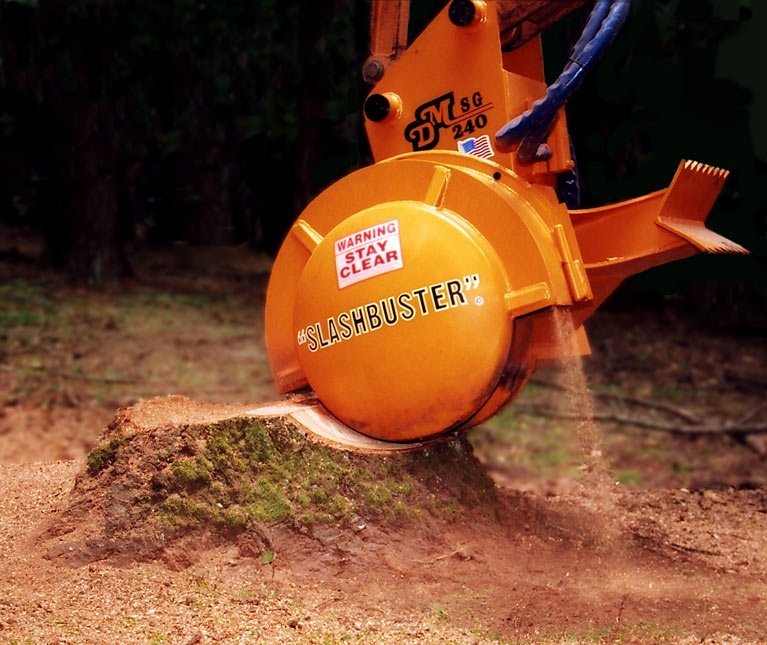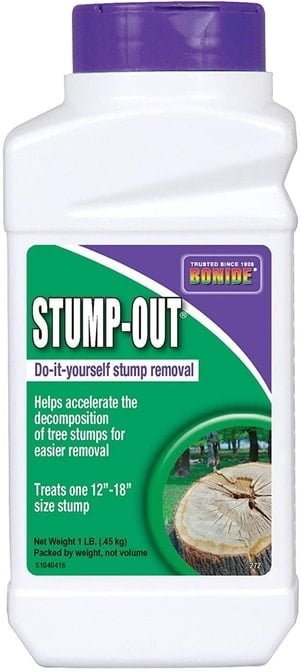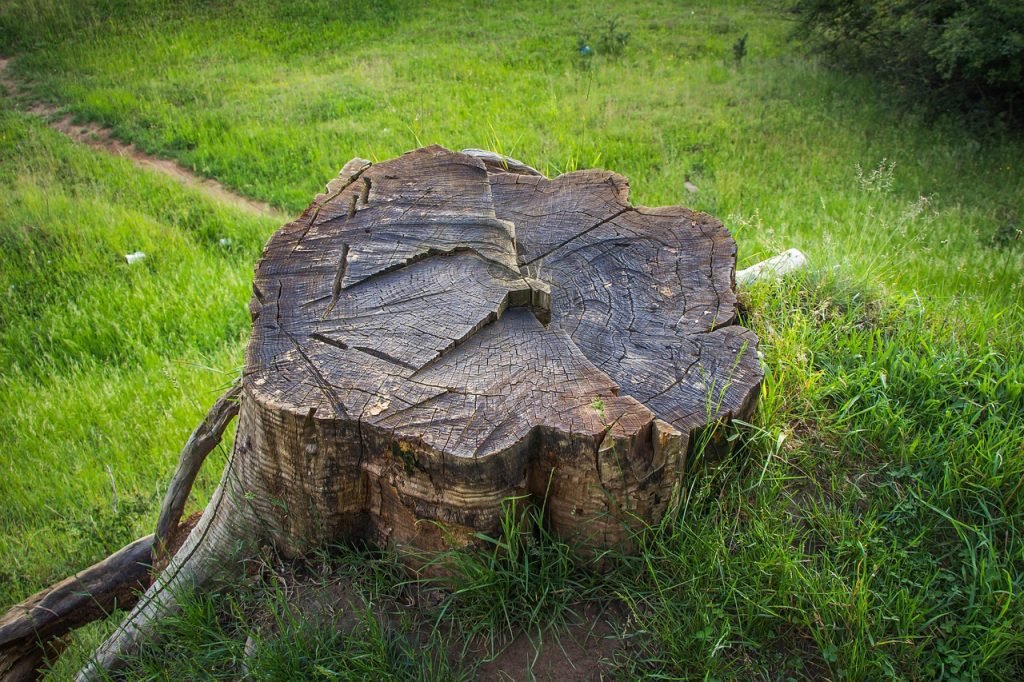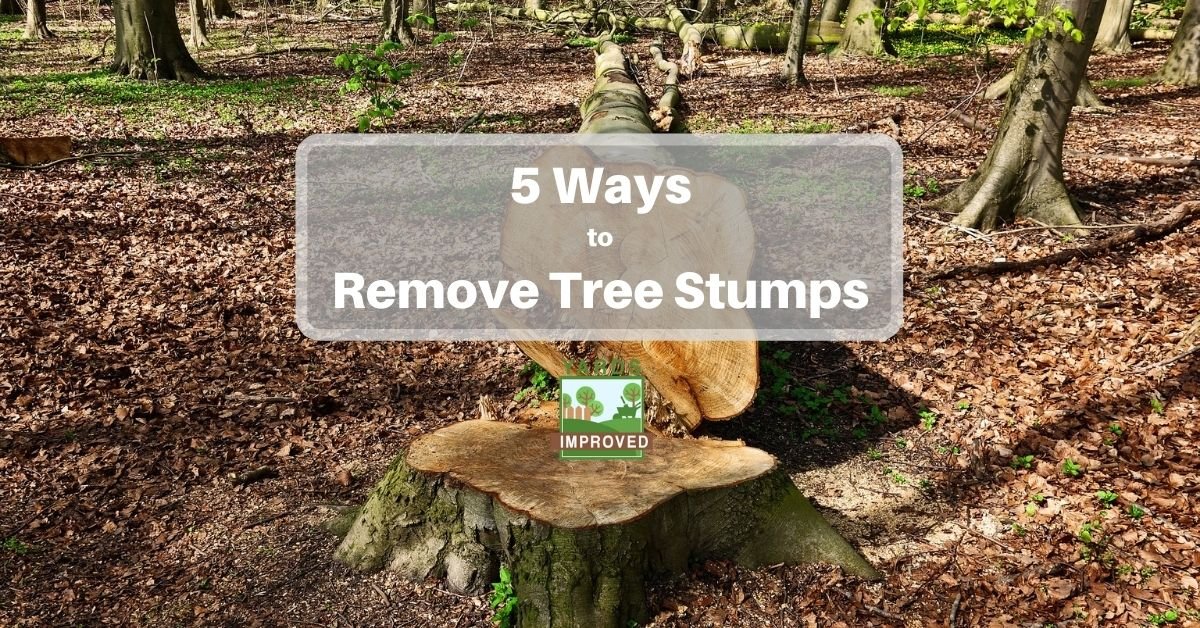Trees may have long lifespans, but they don’t live forever. And when they die or need to be removed for other reasons, we’re often left with an unsightly stump. Getting the tree down is hard enough, but what’s left behind can be even harder to remove.
There are, fortunately, several different ones to get rid of it. They range in difficulty, safety, and time required to do the job. But they can help you achieve a flat lawn without an obstruction in the middle of it.
We’ve tried to put these in order from “easiest” to “hardest” in terms of labor and time involved. However, as is often the case, the easiest according to those factors is also the hardest on your wallet. And if you want to spend as little as possible, you might be stuck with the most back-breaking and time-consuming way of handling it.
For any of these methods, it’s best to cut the stump as close to the ground as possible before working to remove the stump. Be careful not to bump into rocks, especially when using a chainsaw. But the more trunk you can cut off, the less stump you’ll have to deal with. Of course, if you hire a tree service, they’ll handle this part for you.
Hire The Pros
Ok, this might seem like a cop-out. But stump removal is tough and sometimes you just want the job done.
If a tree needs to be taken down, it’s often best to have professionals remove it in the first place. You don’t want it coming down on your roof or the electric wires. Even more, you don’t want to drop it on your head. And if you’re having them remove the tree, you might as well have them dig up the stump, too. It almost always costs extra, but at least the job will be done.
If you are removing the tree yourself, be sure to plan and carry out the task appropriately.
But even if the stump is a remnant of a tree long gone, the pros can get it out more quickly and efficiently than you can.
Local tree removal services almost always offer stump removal services. It can cost between $100 and $200 to remove a stump under two feet in diameter. Of course, prices can vary by location and season.
Rent A Grinder
If you don’t want to bring in the pros, the next best thing is to use their tools. And a stump grinder is designed for this purpose.
Before starting the grinder, make sure children and pets are not nearby. Chips of wood will fly at high speeds. It’s also a noisy machine. That also means that you should be sure to wear appropriate protective gear for your eyes and ears. Long pants and sleeves are recommended, too.
Most grinders work best on stumps that are less than 4 inches above the ground.

Position the grinder over the stump and start it up. The gas-powered machine will cut through the stump easily. Simply cut all the way across, put the grinder in reverse, and move over to the next strip.
Shave off the stump in this way until it’s 3-6 inches below ground level, then fill in the hole with topsoil.
Stump grinder rental costs around $100 a day in most parts of the US. It might not be worth it if you have a single stump. But if you have several – or you want to go in with some neighbors who need stumps removed, too – it’s a great deal.
Home Depot offers various stump grinders for rental based on your location.
Burn It
If you don’t want to rent a grinder, you still have a few alternatives. One of them is to burn the stump and clean up the ashes.
Before considering this, make sure that it’s not prohibited in your area. Open fires are banned outright in many places. In others, they may be restricted if the area is going through a drought.
If you are allowed to burn, then it’s important to make sure that you do so safely. Remove all debris from the area. If your stump is near a building, bushes, or other trees, skip this method and try something else.
Be sure that you can have an adequate supply of water on hand to keep the fire under control, also.
If you can meet the conditions, then you’ll need a drill, a stump removal product, and kerosene or fuel oil. DO NOT use gasoline.
Drill holes in the top of your stump. We’d recommend spacing them by around 4 inches.
Fill the drill holes with your stump remover chemical. This helps soften the wood up so it can absorb your fuel.
Douse the stump with your fuel oil or kerosene. Fill the holes with the fuel. Let it soak in thoroughly.
Light the stump and let it burn. If necessary, you can add kindling to keep it burning.
Let it burn until it smolders. You can add topsoil directly on the remains; this will make sure the fire is out and start filling the hole.


Dissolve It
If you’d rather play mad scientist than firestarter, there are chemical products you can use to help dissolve your stump. This doesn’t take a lot of work, but it does take months for the job to finish.
Drill deep, wide holes in the top of the stump. The deeper and wider the better – do the best you can with the drill bits you have.
Add water to the holes then add potassium nitrate fertilizer. If you’d prefer something natural, you could use Epsom salts instead, although this will take longer.
Soak the ground around the stump. Cover the whole area, stump included, with a plastic tarp to hold in the moisture. Add mulch over the tarp and soak it with water.
Lift the tarp every week or so to see the progress. Add more water and fertilizer to refill the holes. Then re-cover it with tarp and mulch. Repeat until the stump is softened enough to be easily removed.
It takes about a month or six weeks to soften enough to start removing it. But you might have to repeat the process if you weren’t able to drill deep enough the first time.
Once it’s low enough, fill in the hole with topsoil. The decaying process will continue underground.
Dig It Out
Of course, there’s always the old-fashioned but still functional way of getting rid of a stump: dig it up. We wouldn’t recommend trying this for stumps over 15 inches in diameter, though; it’s too much work.
You’ll need a few tools for this one, though:
- Shovel
- Bow saw and/or ax
- Digging Bar
- Mattock (a pickax-type tool – we called them pickaxes as kids, but they do have this specific name
You’ll also want to wear steel-toe boots, work pants, and protective eyewear.
First, clear the area around the stump. Get rid of any ground cover. If there are other plants or bushes in the range of the surface roots of the stump, you may want to dig them up temporarily too. You’ll need at least several feet of workspace around the stump.
Start digging out soil from around the stump as much as possible. This can be tough since the roots will constantly block your way. As far as possible, dig under the root with your shovel, mattock, or digging bar.

Use an ax or bow saw to cut through the roots. Some find one of these tools suffices for all roots, while others prefer one or the other for specific roots.
Continue digging and cutting as you move around the stump. Once you think you have the major roots cut, try rocking the stump with the digging bar. This can help pinpoint any areas that are still attached. It can also break smaller roots.
Use your shovel, mattock, and digging bar to help pry the stump out of the hole. Be sure not to overexert yourself.
Fill the hole with topsoil. You’ll likely need to add more soil as it settles.
Conclusion
A tree stump can be an obstacle or a distraction in your yard. Getting rid of it does require a bit of work. Luckily, there are various ways to do the job, though! Depending on your budget and how much effort you want to put into it, you’ll find one that fits your needs.









